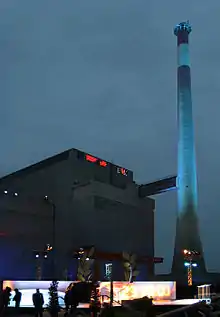Nuclear energy in Austria
In the 1960s the Austrian government started a nuclear energy program and parliament unanimously ordered a nuclear power plant built. In 1972, the German company KWU began construction of the Zwentendorf Nuclear Power Plant boiling water 700 MWe reactor. In 1976, two years prior to the nuclear power plant opening, the government began a program to educate its citizens on the benefits and safety of nuclear power. However, this campaign began a public discussion that led to large demonstrations against the Zwentendorf plant in 1977.[1] On 15 December 1978, the Austrian Parliament voted in favor of a ban (BGBI. No. 676) on using nuclear fission for Austria’s energy supply until March 1998. This law also prohibits the storage and transport of nuclear materials in or through Austria.[2] On 9 July 1997, the Austrian Parliament unanimously passed legislation to remain an anti-nuclear country.[3]

See also
References
- "Referenda and Nuclear Power Plants – A Historical Overview". Greenpeace. Archived from the original on 2011-09-28. Retrieved 2011-11-08.
- "Austria: First country with official anti-nuclear policy". Wise – Nuclear issues information service. 19 December 1997. Retrieved 2011-11-08.
- "Coalition of Nuclear-Free Countries: Anti-nuclear resolution of the Austrian Parliament". WISE News Communique. 16 September 1997. Archived from the original on 23 February 2006. Retrieved 2006-05-19.